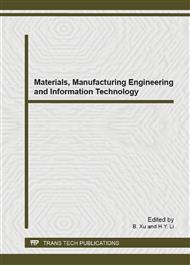p.44
p.48
p.53
p.57
p.61
p.65
p.70
p.74
p.78
An Orthogonal Experimental Analysis of WEDM-HS of Al2O3 Particle-Reinforced Aluminum Alloy 6061 with 10-Vol% Al2O3
Abstract:
In wire electro-discharge machining with an extremely high travelling speed of wire electrode (WEDM-HS), the emulsion is used as working liquid. Because there exists a functional electrolyte, the EDM spark can operate under a relatively large spark gap size condition, and this would facilitate the removal of machined debris. An investigation has been made into the machining feasibility when WEDM-HS has been employed to process Al2O3 particle reinforced aluminum alloy 6061 with 10-vol% Al2O3 (10ALO). And the material removal rate (MRR) has been examined in this study. Since there are many factors that can influence the MRR in the WEDM-HS process, in order to determine which is the most important factor and to optimize the machining parameters, the relative importance of the various machining parameters on material removal rate was established by utilizing an orthogonal experimental analysis. The results of the analysis suggest that to achieve a high MRR for particulate reinforced aluminum 6061 with 10-vol% Al2O3, the duty cycle is the most influential factor among current, pulse duration and duty cycle. And the impact of the different factors follows the sequence of duty cycle > current > pulse duration.
Info:
Periodical:
Pages:
61-64
Citation:
Online since:
March 2014
Authors:
Price:
Сopyright:
© 2014 Trans Tech Publications Ltd. All Rights Reserved
Share:
Citation:


